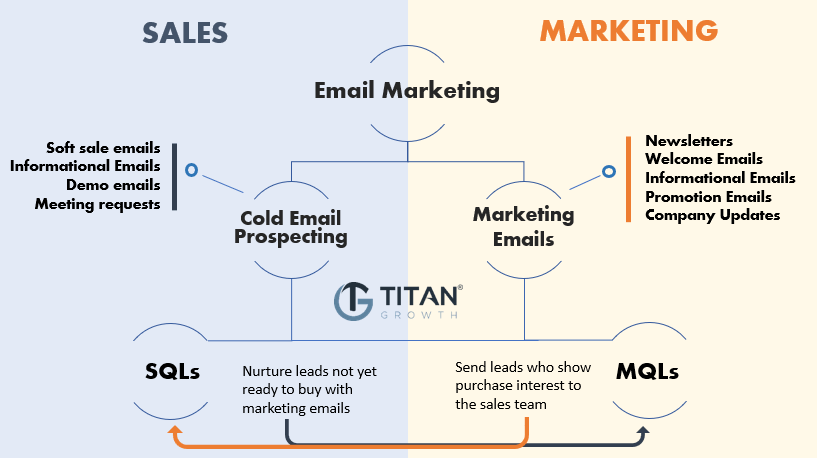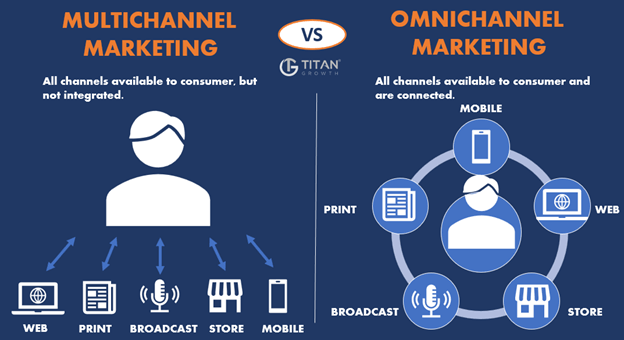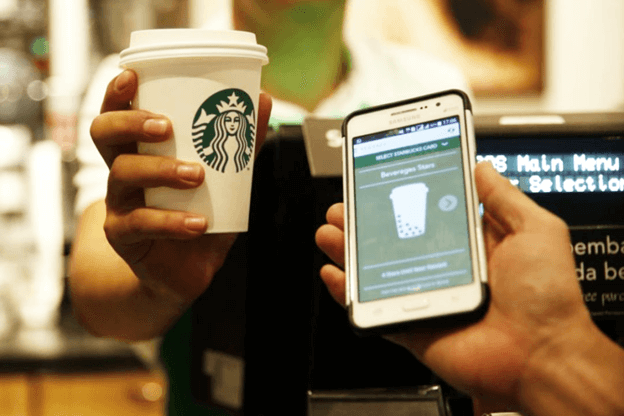Are you a quitter?
When the going gets tough, and the leads get reluctant, do you give up? When a sale wavers, and it’s nearing five do you go home? When they say, “I have to think about it,” do you believe them? When someone can’t talk right now because it’s their kid’s 5th birthday and they’re about to serve the cake, do you let them go?
Do YOU!?

Because you shouldn’t. That’s what a quitter would do. Not a seller. A seller would make that kid wait to get their cake.

Okay, we may be a bit too aggressive here, but the point is, most people give up too soon.
It’s rare for a prospect to respond to a salesperson’s first outreach. So what’s a sales rep to do?
Well, they would follow-up, and then follow up on their follow-ups.
But how many times should you follow-up before moving on, so you’re not a quitter but rather a seller who knows they’ve hit a dead-end?
Here’s a better way of putting that…
How Many Touchpoints Does it Take to Make a Sale?
It can take an average 8 touches to get an initial meeting with a new prospect.
Not make a sale. Just get an initial response.
It takes an estimated 7-13+ touchpoints to build a sales qualified lead.
Not buy something. Just get interested in buying something.
To actually make a sale? That typically takes a lot of touching. We’ve seen it take anywhere from 10 to 60+ touchpoints from start to finish.
Now that’s ridiculous. Trying to get a prospect to convert over 60 different times? Who has time for that? Not us. Or your prospects. After all, there’s cake to be eaten.
So your goal should be to make a sale in as few touchpoints as possible.
To do that takes a true artist.
There is no exact sales follow-up formula. It’s something that is practiced, honed, and perfected through honest handiwork and creative cunning, like a well-trained artist.
Or a well-trained ninja… that paints.
If you take away one piece of advice from our discussion here today, it should be this: Follow-up like Bob Ross paints. Artfully.

So shake off your losses, mix up your outreach, grab your brushes, and hold onto your afros. We’re about to master the art of the sales follow-up.
Always Be Closing
The best place to start any lesson on following up is with our ABCs.
If you don’t know the ABCs of selling, we recommend you head on over to your local Blockbuster and pick up a VHS copy of Glengarry Glen Ross — the classic 90s film about selling real estate.
In it, Alec Baldwin artfully (if not somewhat offensively) motivates a roomful of salesmen to sell better by offering sage wisdom. His advice?
This motivational sales mantra is the regimen of winners.
For our purposes here, the ABCs can roughly be translated to “Always Be Following Up.” Or ABFU, for short. As in, Always Be FUing.
No, wait. That’s not appropriate.
What we’re trying to say is don’t quit. That’s the point. When you stop following up, you stop closing, and if you don’t close, there is no sale.
That’s just math.
The First Goal of Following Up: Make Contact
Does the following sound like you: You’ve reached out to a potential customer. Maybe you sent an email. Maybe you called and left a message. Maybe you pinged them on LinkedIn. You’re feeling pretty good about yourself. You’ve done your job. Now you sit back, pop open a bag of Cheetos, take a swig of Yoohoo, and wait for them to respond.
Because the ball is in their court now.
Right?
Wrong!
The ball is ALWAYS in your court.
Here’s a common outbound B2B outreach sequence:
- Initial Cold Email: No response.
- Follow-Up Email #1: No response.
- Cold Call: No one there. Leave message.
- Follow-Up Email #2: No response.
- Follow-Up Call: Response, but contact not a decision-maker. Get referred to the decision-maker. Start over.
- Cold Call Decision Maker: No one there. Leave message.
- Follow-Up Email: No response.
- Follow-Up Call: Response, but the decision-maker can’t talk now, so schedule an appointment.
- Follow-Up Email: Confirm appointment day and time.
- Meeting Call: Contact made. Warm lead generated.
That sequence took nine touchpoints to just talk to a lead, with one cold email, two cold calls, and six follow-ups.
That’s what it takes to make contact — the first stage of lead generation. The next stage? Qualifying your lead so you can re-initiate contact… over and over and over again until you close.
The Second Goal of Following Up: Qualify Your Leads
Okay, you’ve implemented the 5 surefire strategies to drive leads. So you have some leads. Nice.
But what do you do with them now?
Look at them fondly, trade them with friends, and attach them to your bike spokes?

Nope.
The sole goal of following up isn’t just to initiate a conversation; it’s also to qualify (or disqualify) your leads and send them through your marketing drip and sales funnel.

The end result being where you close.
To successfully get there, you first need to know which type of lead you’re dealing with.
The Difference Between Leads: MQL vs. SQL vs. SAL
There are two types of lead qualification systems.
- The Subjective Temperature-Based System
- The Objective Category-Based System
The former is what most people outside your sales department like to use. It essentially involves putting your hand to the forehead of your leads to determine whether they are:
- Hot – Seem very interested in doing business.
- Warm – Might be interested in doing business.
- Cold – Not interested in doing business, or don’t even know you exist.
But these are really vague qualifiers.
One person’s consideration of a warm lead may be another person’s absolutely freezing.
Just ask someone from Michigan and someone from California how they feel about 50-degree weather.

A far more relevant and effective system is the latter systematic approach based on metrics that track the steps along the customer journey and sorts leads into distinct categories.
These categories are:
- Marketing Qualified Lead (MQL)
- Sales Accepted Lead (SAL)
- Sales Qualified Lead (SQL)
MQL
A Marketing Qualified Lead (MQL) is someone who likely isn’t ready to buy yet, but shows potential. They demonstrate interest beyond inbound leads by taking certain actions on your site like viewing pricing pages, reading multiple blog posts, or checking out your About Us page. The likelihood of their becoming a customer is looking good, with the right nurturing.
They are also considered a warm lead.
SAL
A Sales Accepted Lead (SAL) is an MQL that has been researched and vetted and is ready to be handed off from marketing to sales. They have expressed interest in what you offer by reaching milestones set by marketing analytics, like certain site engagements, social media interactions, or micro conversions. They also meet specific sales criteria.
They are considered a hot lead.
SQL
A Sales Qualified Lead (SQL) is someone who has shown definite interest and is ready to buy. This is displayed by their asking certain, high-value questions or seeking one-on-one interactions.
They are considered very hot leads.
A SQL is closely linked to a SAL. The difference is that a SAL has been accepted by sales for follow up actions, while a SQL has already engaged with sales, such as via a phone call or form request.
At this point, the lead is considered to have converted into an opportunity. From there, they can either become:
- An opportunity in-progress
- A closed-lost opportunity (i.e., failed to convert into a customer)
- A closed-won opportunity (i.e., converted into a customer)
You’re probably getting bored right about now. Reading about lead qualifications will do that. But, trust us, it’s really important.
Why are these qualifications really important?
Because any true follow-up artist knows that the lead needs to be qualified properly if there is any chance of closing. To get from one category to the next and make a sale, you will need to follow-up repeatedly every step of the way. But to do so effectively, you will want to know what kind of lead they are which will dictate how you talk to them.
How Often Should You Follow-Up
More than you think.
The more you attempt to make contact, the higher the probability that you will make contact.
Our rule of thumb is to follow up as many times as needed until you get a response.

Maybe they’re ignoring you because they’re not interested. Maybe not. The only thing you know for sure is you don’t know until you get a response. So the only outcomes you should settle for are “Yes” or “No.”
Just be aware that sometimes silence can equate to a response. It’s probably safe to assume that after eight follow-ups without a reply, the answer is “No.”
Your follow-up rate should be based on whether you’ve had any previous interaction with the lead — i.e., are they cold, warm, or hot.
If your outreach is completely cold, and you have never interacted with the other person, follow up a maximum of eight times. If no response, they need more nurturing from your marketing team.
If your outreach is warmer, and you have had some form of interaction that was NOT a definitive “no,” then follow up as long as it takes to get a response. Any response. Even if it’s a “no.” Don’t give up until then.
What’s the Right Frequency for Following Up
In terms of frequency, start strong, and decrease over time. Here’s a general outline for timing your follow-ups:
Day 0: Initial Outreach
Day 1: 1st Follow-up
Day 3: 2nd Follow-up
Day 7: 3rd Follow-up
Day 14: 4th Follow-up
Day 28: 5th Follow-up
From There: Once a month
Rember, attitudes change. If someone doesn’t show immediate interest right now, they could change their mind down the road. So play the long game.
Which Follow-Up Method Should You Use: Manual vs. Automatic
Ah yes, the classic scenario of what came first: the ninja or the robot.
Should you manually engage like a disarmingly friendly ninja or blast out automated messages like a stoic robot?

To manually follow up is pretty straightforward.
- Pick a lead.
- Research their interests and past interactions.
- Use that research to tailor your communication to them.
- Send it out.
- Pick another lead, and do it all over.
The manual follow-up emphasizes personalization, sincerity, and legitimacy. But it takes a lot of time and effort. Not to mention managing reminders to follow up on a cadence.
That’s why teams turn to automation.
The automated follow is as follows:
- Build a follow-up sequence.
- Have it automatically sent out to leads as they roll in or meet specific trigger criteria.
The automated follow-up emphasizes outreach at scale, optimizing time and resources. But it foregoes some of that personal touch.
So which is right for you?
Luckily, the two don’t have to be mutually exclusive.
Add manual best practices to automated sequences, and you’re left with the ultimate follow-up method: a ninja robot… that paints.

(For initial reach-outs, we do recommend highly customized manual outreach)
Not being ninja-like is one of the main reasons why automated cold email prospecting fails. Another is not properly configuring CRMs — like SalesForce and HubSpot — to generate automated sequences tailored to each lead.
There’s also a third reason and it is….
Don’t Rely Just on Email for Following Up
Email is the bedrock of outreach. But it’s not the only game in town.
There is a reason why multichannel marketing is so important. Targeting multiple channels provides multiple touchpoints for closing multiple customers. After all, out of sight, out of mind. So never be out of sight, and you will always be on their mind.
Be sure to implement as many channels as possible into your follow-up strategy. For example:
- Email – A long-term play that leaves the prospect in control of when and how they respond (if at all). Ideal for nurturing MQLs into SQLs.
- Phone Call – A more direct approach that’s a little more intrusive but can get a faster response than an email. Ideal for turning SALs into SQLs.
- SMS – A more informal approach that is less intrusive than a call but more direct than an email. It can be borderline stalking unless you’ve previously built-up a relationship—ideal for SQLs.
- Social Media – A short-term “soft contact” that opens the door for more direct contact. Also known as social selling. Ideal for nurturing leads into MQLs and MQLs into SQLs.
- Direct Mail – A more personal touch that supersedes digital clutter, like a handwritten note or creative mailer. Best if only performed once. Ideal for turning Unqualified Leads and MQLs into SQLs.
- In-Person Visit – This is the most direct approach that forces an answer. Tricky to pull-off but provides the most personal touch. Works with any type of lead when there’s nothing left to lose.
As you can see, there’s more than one way to sell a lead.
Diversify Your Touchpoints and Be Consistent
Most people will contact someone once on one channel and call it a day. That’s leaving opportunity on the table.
If you figure it will take eight touchpoints to make contact with a prospect, don’t put all your eggs in one basket. Approach them from multiple channels, interspersed with one another. Remember, multichannel marketing is the key.
For example:
- 3 Emails
- 2 Calls (and Voicemails)
- 2 LinkedIn Messages
- 1 Direct Mail
A multichannel follow-up approach like this helps prevent “banner blindness” and keeps your messaging fresh.
We get it.
You don’t want to be a pain in the a$$.
No one wants to run the risk of scaring off potential customers by being annoying. But this fear is unfounded. If someone is that sick of your follow-ups, they will tell you or unsubscribe. That’s the absolute worst thing that will happen. We promise. And it’s actually a good thing. Because now you can move on to the next prospect.
So, we ask you, are you reaching out to your leads enough?
Basho Them Over the Head With Awesome Sales Emails
The ‘BASHO email’ is a highly personalized email directed at decision-makers with the purpose of setting up a meeting. It was developed by world-renowned sales trainer and entrepreneur Jeff Hoffman while working with the BASHO brand, hence the name.
Although BASHO is typically used in cold email outreach, its methodologies can be applied to all forms of business communication, including follow-ups.
BASHO email outreach can be seen as a three-step process:
- Research – The first and most important step. Know thy lead. Scan blogs, company About pages, and social profiles (like LinkedIn and Twitter) to find out what you can about the lead.
- Pinpoint Talking Points – Highlight anything that stands out as either a lead’s personal interest or achievement that you can reference.
- Reach Out with Referencing – Craft a communication (email, social post, call, handwritten letter, whatever) using what you’ve found. Convey what you know in an authentic, approachable way.
Additionally, your communication should have a relatable subject line, strong hook, and clear CTA. Oh yeah, and keep your follow-ups short and sweet.
Here’s an example of BASHO email in action:
Subject: I heard you need a clean up on aisle 5
Dear Mr. Scott,
I read your book ‘Somehow I Manage’ and found it very compelling. I couldn’t agree more that toxic work culture is the worst. After finishing, I had to reach out. I called your office yesterday but wanted to follow-up via email in case that was easier.
While reading your book, I couldn’t help but notice how much you enjoy eating bacon in bed—me too! So much so I started a company that makes pillows that also grill food. We call it My Grillow.
If you’re interested, I would love to show you how My Grillow can improve your bed’n’bacon needs.
Do you have time this week for a 15-minute phone call to discuss?
Sincerely,
Danny
Short. Sweet. BASHO-y.
Conclusion: Don’t Give Up, Follow-Up
You don’t look like a quitter.
You look like a seller.
A seller who closes deals.
You’ve made it all the way to the end of this post, so that alone tells us you don’t quit easily.
It was a test—this entire post.
And you passed.

Congratulations! You are now a certified master of the follow-up arts. A graduate of MFU, if you will. Now, go forth and peddle.
Just remember our advice in the beginning about Bob Ross and being artful and remember to keep the following in mind when following up:
Ninja hard. Personalize often. Qualify properly. And, above all else, always be FUing.
Want more help with your outreach? Let’s talk.





















